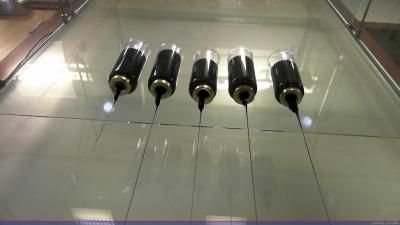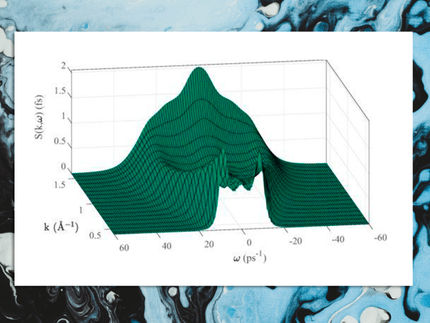Nature of solids and liquids explored through new pitch drop experiment
Advertisement
Physicists at Queen Mary University of London have set up a new pitch drop experiment for students to explore the difference between solid and liquids. Known as the 'world's longest experiment', the set up at the University of Queensland was famous for taking ten years for a drop of pitch a thick, black, sticky material to fall from a funnel.

Queen Mary University of London have set up five bitumen samples in glass tubes with different orifice diameters. Two webcams record the samples by taking the pictures from top and bottom angles every hour.
Queen Mary University of London
Publishing in the journal Physics Education, the design of QMUL's trial is different to both well-known pitch drop experiments*. It uses different bitumen (the pitch), which is 30 times less viscous than the Queensland experiment, so that the flow can be seen quicker.
The team have installed not one but five different glass tubes with varying diameters to give five speeds of flow, and set up web cameras to catch the drop in action.
"We're using the pitch drop experiment to inspire our students and make them question the fundamental nature between solids and liquids," said Kostya Trachenko, lead author and Reader at QMUL's School of Physics and Astronomy.
"Because our experimental set-up is unique, we have proof that apparent solids like bitumen can flow over long time scales in this case, one academic year."
Most read news
Other news from the department science

Get the chemical industry in your inbox
By submitting this form you agree that LUMITOS AG will send you the newsletter(s) selected above by email. Your data will not be passed on to third parties. Your data will be stored and processed in accordance with our data protection regulations. LUMITOS may contact you by email for the purpose of advertising or market and opinion surveys. You can revoke your consent at any time without giving reasons to LUMITOS AG, Ernst-Augustin-Str. 2, 12489 Berlin, Germany or by e-mail at revoke@lumitos.com with effect for the future. In addition, each email contains a link to unsubscribe from the corresponding newsletter.




























































